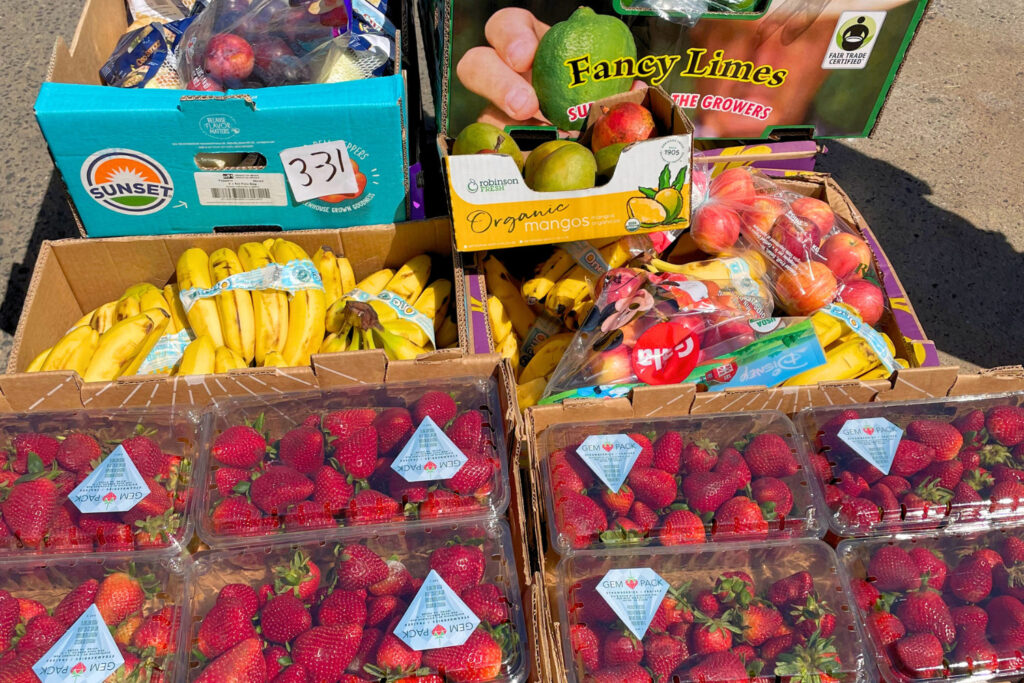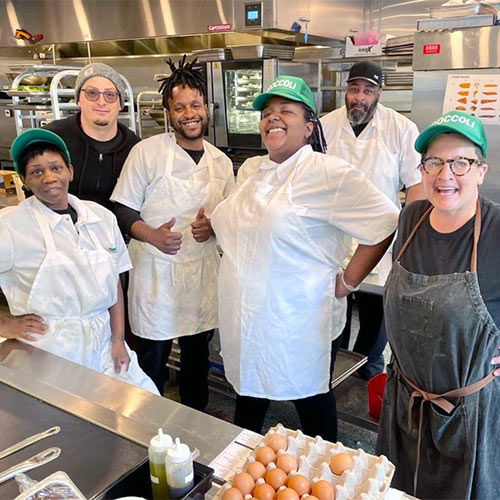FOOD AS MEDICINE: DIGESTIBLE BITES – MAY 2023
The short version:
- A shocking stat: 80% of healthcare dollars are allocated to preventable chronic disease, yet nine out of 10 Americans don’t meet the government’s own recommendations for fruit and vegetable consumption!!! Check out the end of this blog post for tips on how to include more fruit in your daily diet!
- In 2020, one in six military and veteran families reported experiencing low food security or hunger.
- The American Heart Association and The Rockefeller Foundation’s vision for their Food is Medicine (FIM) Initiative “is to accelerate a future in which millions of patients receive the benefit of a more holistic approach to diet and health.”
- 27% of disabled people live in poverty (which is 2x the rate in the general population!). Disabled people are struggling to access the food they need to stay healthy with the dramatic increase in food prices and the end of pandemic-era SNAP benefits.
The longer version:
‘Food as medicine’ gains more traction
“Eighty percent of healthcare dollars in this country are allocated to preventable chronic disease, yet nine out of 10 Americans don’t meet the government’s own recommendations for fruit and vegetable consumption,” said Cathy Burns, CEO of the International Fresh Produce Association, during a recent Agri-Pulse Ag & Food Policy Summit. “There is a clear and significant role for food interventions in the healthcare system. “You go to the doctor, you get a diagnosis, and they give you a prescription for fruits and vegetables to treat your condition. Imagine a world where your diagnosis is being treated by what’s on your plate, not by what’s in a pill,” Burns added. “This could be transformational for the trajectory of human health in this country.”
- The 2020–2025 Dietary Guidelines for Americans advise incorporating more fruits and vegetables into U.S. residents’ diets as part of healthy dietary patterns. Adults should consume 1.5–2 cup-equivalents of fruits and 2–3 cup-equivalents of vegetables daily (source).
Healthy foods pilot program to launch in Houston targeting veterans in need
“One in six military and veteran families reported experiencing low food security or hunger in 2020. Devon Klatell is the Vice President of The Rockefeller Foundation’s Food Initiative and said in a statement that low food security and hunger can lead to increases to the risk of diet-related diseases. Fresh Connect will expand on an already existing Food is Medicine program, a Rockefeller Foundation program which attempts to integrate food and nutrition into health care….Doctor Quindola Crowley, the Chief of Social Work at Houston’s Department of Veterans Affairs, said having Houston as part of the expansion makes sense because of its large veteran population. “We definitely know that we’re one of the largest VA facilities in the country. There’s about 300,000 veterans in the Houston area,” she said.”
Medically tailored meals have proven to be effective. Now health insurers are paying attention.
“Medically tailored meals have proven to be effective. Now health insurers are paying attention.
State Rep. Donna Bullock (D., Philadelphia) has called for the state to allow hospitals to provide eligible medical assistance beneficiaries with prescribed meals.”
Food is Medicine Initiative
A collaboration of the American Heart Association and The Rockefeller Foundation
The vision for the Food is Medicine (FIM) Initiative is to accelerate a future in which millions of patients receive the benefit of a more holistic approach to diet and health, health care professionals know how to target and use FIM approaches to help prevent and manage disease, and payors have sufficient, objective cost and effectiveness evidence for reimbursing FIM programs.
How Food Inflation Adds to the Burdens Disabled People Carry
“While many Americans have struggled with rising food prices this year, the pressures are even more intense for disabled people who have to balance additional constraints—and whose needs are sometimes more expensive, and more complex, than those of the general population.
Complicating matters for disabled people are ever-present systemic realities. Almost 27 percent of disabled people live in poverty, nearly twice the rate of the general population, and that high poverty rate drives a high rate of food insecurity. Even in the best of times, disabled people are struggling to feed themselves.”
Tips on how to include more fruit in your diet!
- Fruit on hand: I make sure to keep washed berries in the fridge so I can grab a quick handful when I need a snack.
- Fruit additions: Add fruits to your cereal and pancakes. My kids love bananas and berries cooked into their pancakes and raisins or dried apricots on their cereal.
- Try dry: Eat more dried fruits. It’s an easy, on the go option! I highly recommend the dried mangoes from Food Rescue US – Fairfield County food donor Trader Joe’s. What a treat!
- Fruit ice: Freeze your fruits and add them to your water.
- Vacay in a bowl: Have fruit salad ready to go in the fridge. It’s totally decadent and makes you feel like you’re on a perma-vacation.
- Renew your fruit: if your fruit looks like it’s about to be too ripe, throw it in a smoothie and enjoy the added fructose and those super ripe flavors!
- SEND ME YOUR TIPS ON HOW YOU GET MORE FRUIT IN YOUR DAILY DIET!
Thanks,
Food Rescue US – Fairfield County Food as Medicine Liaison
If you enjoyed this post, you might also like last month’s Food As Medicine post.




